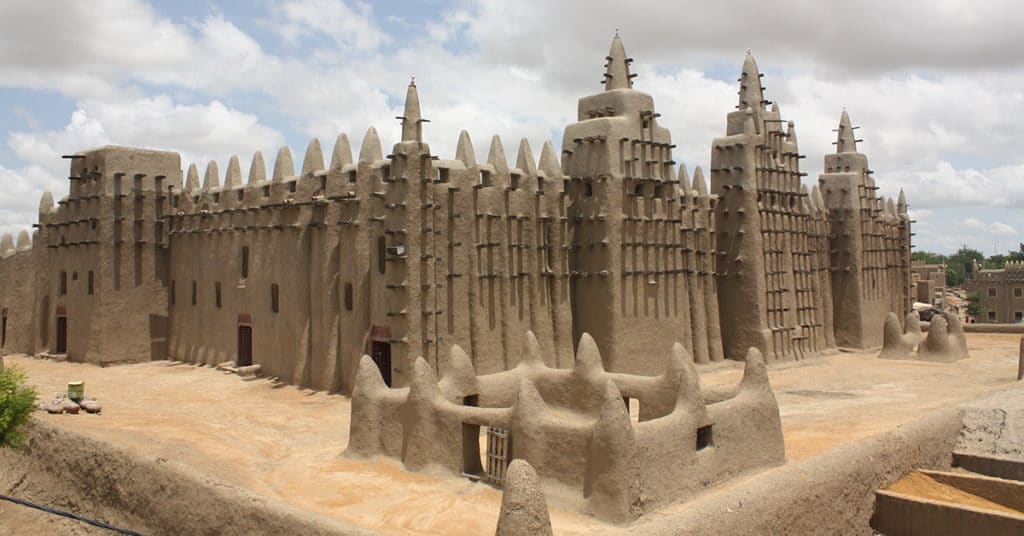West Africa is a group of seventeen countries with distinct, but related cultures in the western Sahel and sub-Saharan Africa from Senegal to Nigeria.
The coastal countries from north to south are: Senegal, The Gambia, Guinea-Bissau, Guinea, Sierra Leone, Liberia, Côte d’Ivoire, Ghana, Togo, Benin and Nigeria.

The interior countries of Mali, Burkina Faso and Niger range from the Sahel up into the Sahara Desert. These are the lands of the great desert caravans.
West Africa and the Americas
Much of the African Diaspora in the Americas originated in coastal West Africa and a surprising amount of American culture has its origins there too.
Until the supercontinent Gondwana began breaking apart in the Jurassic Period, what are now South America and West Africa were connected. It’s easy to see on a globe how what is now Brazil fits like a puzzle piece into what is now the Gulf of Guinea.
We remain connected by the trade winds and currents that blow from around The Gambia directly to Puerto Rico and the Caribbean. Once you enter those currents, there is no turning back. The winds and currents are too strong. The West Indies are even regularly fertilized by dust from the Sahara Desert. Tropical storms and hurricanes follow the same path.
The bottle gourd or calabash has been used as food, bowls, a canteen and musical instruments in both Africa and the Americas, since long before European contact. DNA studies suggest that it floated across the Atlantic from Africa.
The other thing that connects us was the human slave trade of the Colonial Period. The infamous Middle Passage crossed the Atlantic from West Africa or Central Africa to South America, the Caribbean and North America.
On the way to the Caribbean and North America, Puerto Rico was the first reliable water stop. Havana, Cuba was the main trading port. It was also where Spanish galleons gathered to form convoys for the crossing back to Europe.
Because it was the main collection and distribution point, whatever happened in Cuba spread around the Spanish-speaking Americas. For example, the Cuban habanera dance evolved into Argentine tango.
We are so connected and mixed together. It’s really incredible.

